BHG - Under the canopy of hundreds of years old Shan Tuyet tea trees on the Tay Con Linh range, the Dao people of Cao Bo commune (Vi Xuyen) are continuing to write the story of livelihood, culture, tourism and aspirations to rise up, so that Shan Tuyet tea trees become the "golden key" to open a new direction for sustainable economic development, linking agriculture with community tourism.
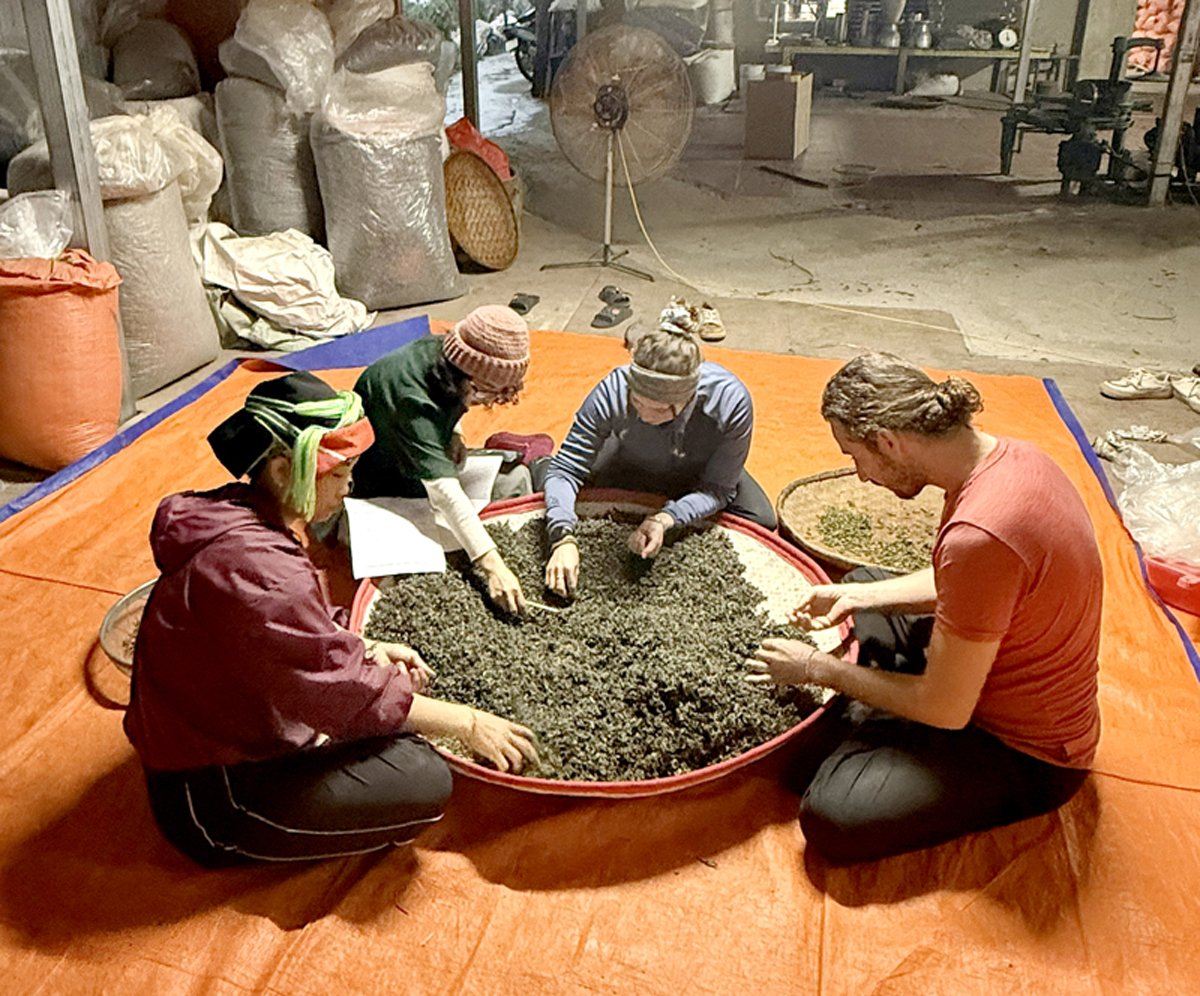 |
| Foreign tourists experience the Shan Tuyet tea production process in Cao Bo commune. Photo: Bien Luan |
Located on the western slope of Tay Con Linh mountain range, Cao Bo commune is blessed with a cool climate and soil that is especially suitable for the growth of Shan Tuyet tea trees. This is one of the endemic tea regions of Ha Giang with more than 1,000 hectares of Shan Tuyet tea, of which the harvested area is 757 hectares. In particular, many ancient tea trees are 100 - 400 years old. Shan Tuyet tea hills are hidden in the mountain mist, concentrated in the villages of Lung Tao, Tham Ve, Tat Khao, Thac Hung, Thac Tang, Khuoi Luong. Cao Bo's ancient Shan Tuyet tea is considered by experts to be a rare tea variety, with white powder on the tea buds. After being roasted, the leaves have a snow-like color, the tea water is golden yellow, fragrant, slightly bitter and has a deep sweet aftertaste. Thanks to this special quality, in 2011, Cao Bo tea products were granted an organic tea certificate by the International Federation of Organic Agriculture Movements, opening up export opportunities. In 2015, more than 220 ancient Shan Tuyet tea trees in Cao Bo commune were recognized as Heritage trees by the Vietnam Association for Conservation of Nature and Environment.
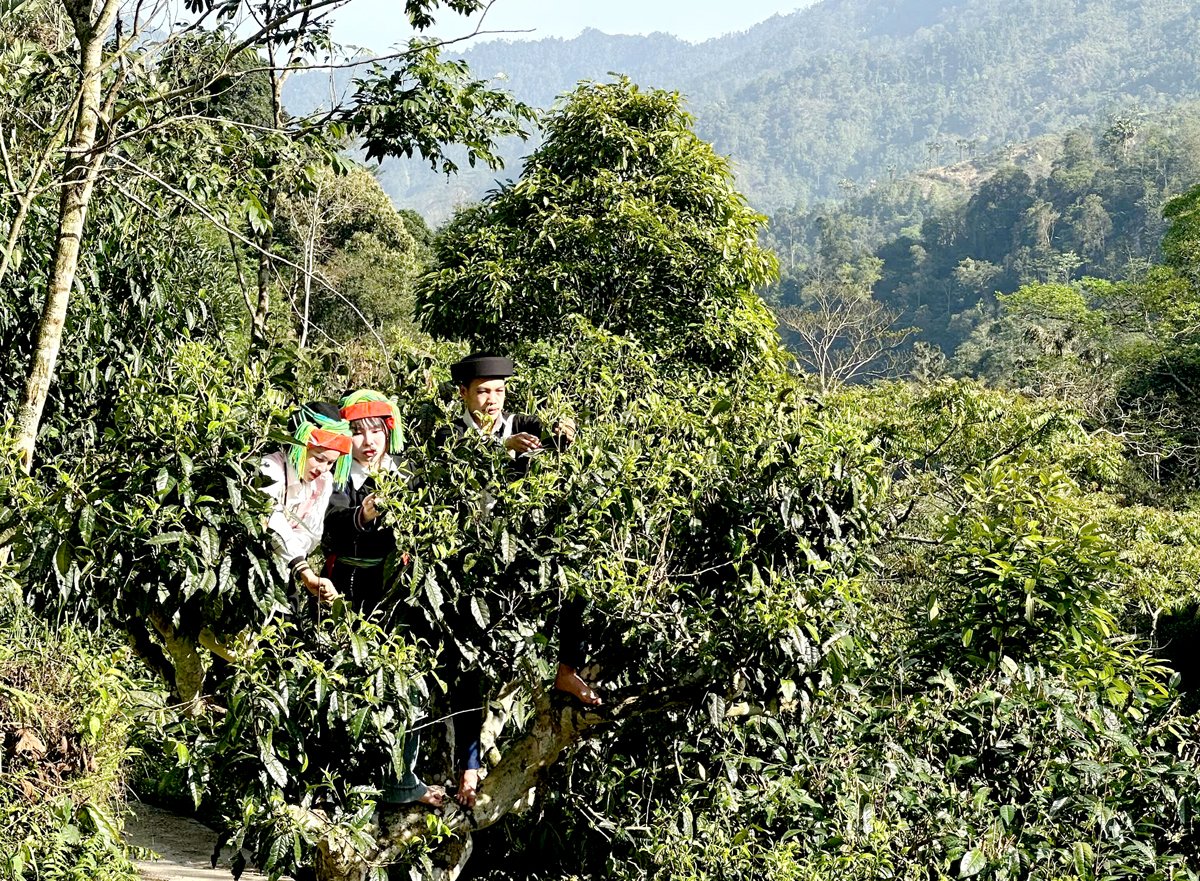 |
| Shan Tuyet tea trees in Cao Bo are 100-300 years old. Photo: PV |
This season, Cao Bo people are actively harvesting the spring tea crop. If in the past, the main method of picking and drying tea of the people was manual, serving local consumption, now with the support of local authorities, agricultural extension programs and the development of science and technology, tea production has clearly changed. The whole commune has more than 20 tea production and processing facilities, including 1 company and 3 cooperatives investing in deep processing technology, improving product quality, building a clean, organic tea brand, meeting VietGAP standards and exporting to demanding markets such as the US, China, Belgium, Russia, Turkey. Some products such as: Yellow Tea, Green Tea, Black Tea of cooperatives meet the provincial 3-star OCOP standard. Every year, Cao Bo harvests about 500 tons of tea, bringing in revenue of over 10 billion VND, contributing significantly to hunger eradication, poverty reduction, and improving people's lives.
In addition to developing agricultural economy, in recent years, when the type of experiential and discovery tourism has increasingly developed, Cao Bo commune has focused on exploiting the potential of experiential tourism associated with Shan Tuyet tea trees, attracting a large number of tourists, especially foreign tourists to visit. Chairman of Cao Bo Commune People's Committee Dang Van Chung said: "Promoting the advantages of Shan Tuyet tea trees, the commune encourages and supports people and businesses to invest in producing and processing high-quality tea products that meet OCOP standards. Along with that, the annual "Heritage Tea Land" Festival is organized to both enhance the economic value of tea trees and promote tourism development. Visitors here can participate in activities such as trekking ancient tea hills, picking tea by hand, learning how to roast tea and enjoying tea in a homestay space imbued with the cultural identity of the Dao ethnic group".
DISCUSSION
Source: https://baohagiang.vn/kinh-te/202505/gia-tri-kinh-te-tu-cay-che-shan-tuyet-cao-bo-40e4654/



![[Photo] Ho Chi Minh City holds funeral for former President Tran Duc Luong](https://vphoto.vietnam.vn/thumb/1200x675/vietnam/resource/IMAGE/2025/5/24/9c1858ebd3d04170b6cef2e6bcb2019e)

![[Photo] The Government Standing Committee works with ministries and branches on the real estate market situation.](https://vphoto.vietnam.vn/thumb/1200x675/vietnam/resource/IMAGE/2025/5/24/e9b5bc2313d14c9499b8c9b83226adba)




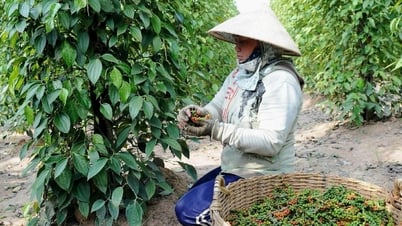
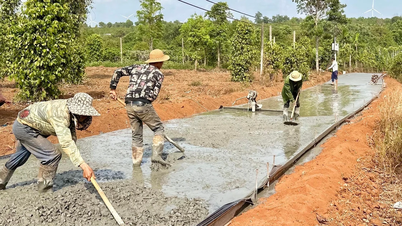









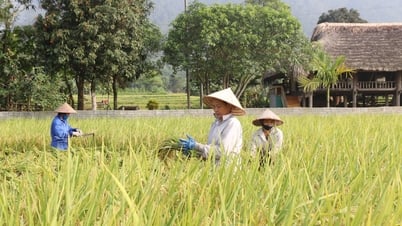
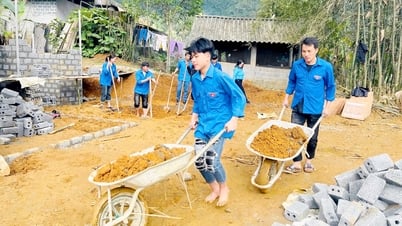

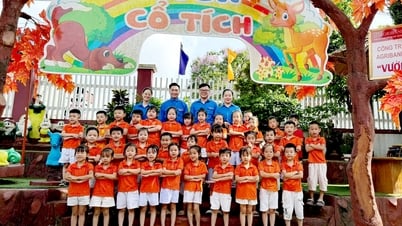
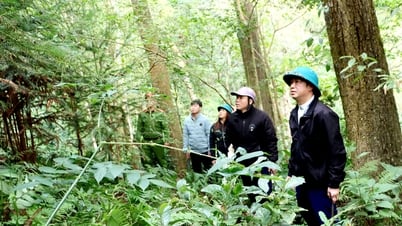


![[Photo] Party and State leaders visit former President Tran Duc Luong](https://vphoto.vietnam.vn/thumb/1200x675/vietnam/resource/IMAGE/2025/5/24/960db9b19102400e8df68d5a6caadcf6)













































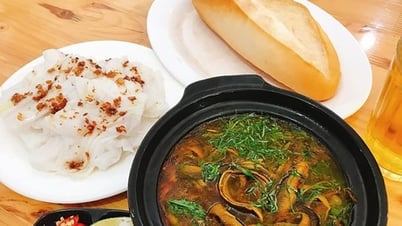

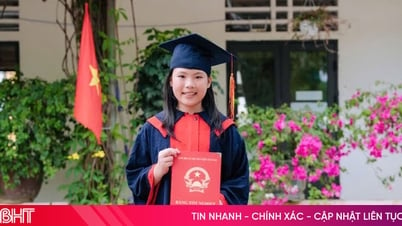












Comment (0)